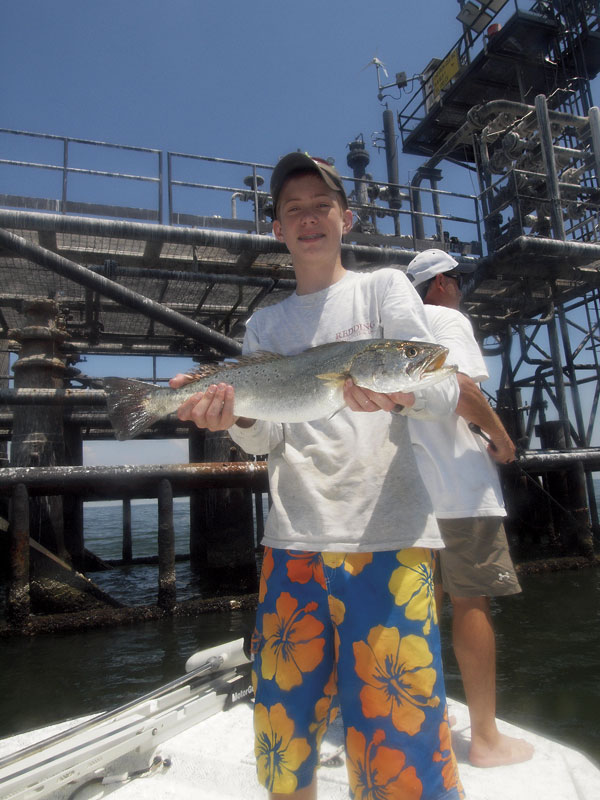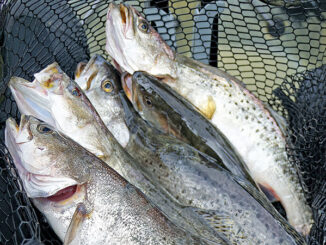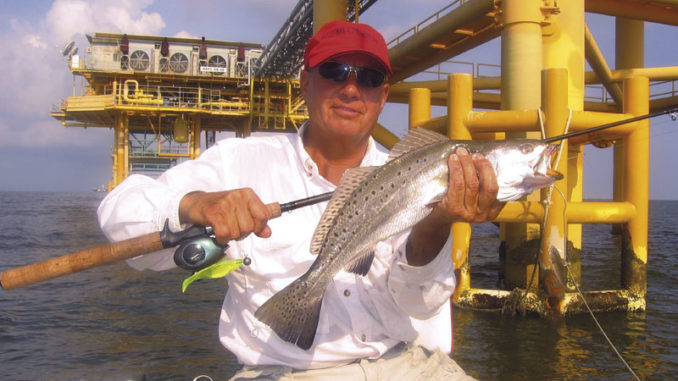
Nearshore, inshore oil and gas rigs along Louisiana coast provide speckled trout with places to fatten up around productive structure. Here’s how to judge them and fish them.
The soft and featureless bottoms of the lakes and bays in the Mississippi River estuary hold little interest to speckled trout or fishermen, except where structure raises a hardened edge against that softness. This may be an island, an oyster bed, or an oil and gas rig.
Inshore oil and gas rigs are a normal part of the Louisiana waterscape, yet they are often overlooked as fish-holding structures. Only a small percentage of fishermen actually target specks on these gangly giants that line the horizon. One reason could be that the best rigs are located farther from shore than many fishermen want to venture, and without knowing how to choose one over another, long runs across open water can be intimidating.
In most areas, rigs are more than a few miles apart, so if you pick the wrong one, you will waste a good deal of time running. Some rules of thumb for choosing and fishing rigs might help someone starting out rig-fishing.
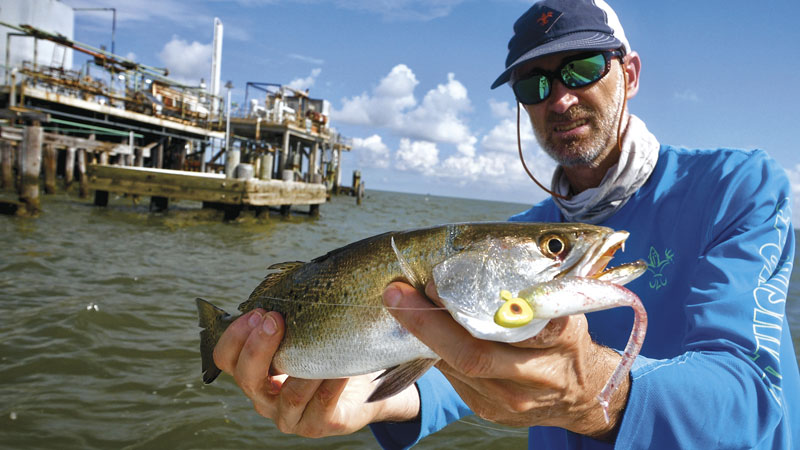
Start with a plan for which rigs you want to fish. These are subject to change while on the water, but pre-planning ensures that you try at least a few rigs with good potential to hold speckled trout. Identifying the best rigs can come from word-of-mouth, from fishing reports or videos, or you can do technical research using online resources.
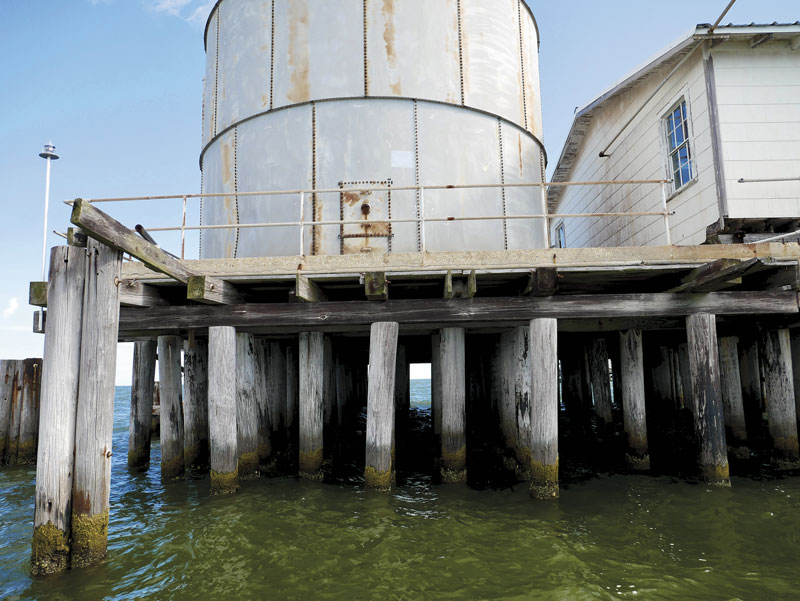
A few convenient ways to gather useful information online about the oil and gas rigs before you launch your boat do exist. One resource is the SONRIS website run by the Louisiana Department of Natural Resources. This site lists the locations of all oil and gas wells in state waters. Layer this location information with water-depth data so you are fishing the appropriate depth range for the season. In some areas, you can add another layer of data by noting salinity concentrations, either through online salinity charts or salinity models. Salinity values are useful during the spawning months for speckled trout.
Google Earth is very useful for finding rigs, despite having to search for them manually. Satellite images provide another layer of useful information about a rig before you arrive. For instance, you can see its size and shape. A rig with more pipe racks and gangway platforms jutting from the main platform has more fish-holding potential.
Satellite images also reveal whether a rig has a large tank or even more than one tank. Large tanks need a lot of support, which typically means there is a dense forest of pilings under them. As in a dense forest, the closely spaced pilings provide cover from predators and surface area for living creatures. As a general rule, rigs with lots of structure create more habitat than rigs with less structure.
It is also convenient that Placemarks in Google Earth can easily be transferred to mapping programs of the major marine electronics brands without manually inputting coordinates.

The concept that silence is golden when it comes to human-generated noise is a good one. The negative effect of lots of unnatural noise on speckled trout is evident, whether on shallow flats in the winter, along the trestle in Lake Pontchartrain, or around inshore rigs siting in water less than 10 feet deep. Trout, especially older fish, generally do not feed as readily where we are making a lot of noise. That’s why I don’t fish rigs that have lots of industrial boat activity. If I reach my target rig and a tugboat and barge are moored to it or a crane is moving items from platforms to ships, I choose another rig from my plan and head there.
View inshore rigs as vertical and horizontal planes. The vertical plane is visible as pilings, pipes and concrete walls, and the horizontal plane is the shell pad beneath and around the rig.
Shell pads are laid down when larger rigs are built, but experience shows that many of those pads have either never existed, sunk below the bay floor or have been covered up by sediment. An uncovered shell pad makes the most-productive rig environment for fishing and is more valuable even than the structures in the vertical plane. A good pad provides lots of surface area for benthic organisms to thrive, including crustaceans, croakers and others that will be eaten by speckled trout.
A raised shell pad is the very best configuration. I know one rig where the pad is 6 to 12 inches above the surrounding bottom, and in the right conditions, trout will stage below the edge of the pad. I position my boat off the rig and a half-cast away from the edge of the pad. This sets me up to cast a jig onto the shell pad and bounce it toward the edge, where trout will smack it when it reaches the small drop-off. If a rig has a good shell pad, you can expect to find trout anywhere across the pad, from the edge to where the vertical structures rise, based on the conditions of the day and the presence of large predators.
A rig’s vertical plane is also a productive habitat for various organisms, including barnacles and schooling species of finfish. If you are targeting sheepshead, an abundance of barnacles is a good sign. While speckled trout do not eat barnacles, they will eat organisms that feed on barnacles, so the biodiversity of the vertical plane is an asset. Trout will also use the vertical structures as protection from larger predators.

Many rigs in Louisiana are in poor repair and have collapsed gangways, orphaned pilings and pipe scattered on the bottom. Be prepared to hang up on these relics, but despite being an annoyance, this debris increases the potential habitat for various organism and speckled trout. Some of my most-productive spots are derelict pipe racks that do not look significant but hide a wealth of trout-holding habitat at their base.
Work the bottom when targeting trout around rigs. Trout often feed further off of some rigs because of good horizontal plane habitat or sometimes because of strong tide, but the most-productive zone is where the horizontal and vertical planes intersect. This area can provide trout with opportunities to forage for benthic organisms and schooling finfish, while giving them cover to escape from large predators such as sharks and dolphins.
The easiest way to present the bait into this productive zone is with a jig carrying a plastic body or even a live shrimp. This allows the bait to be cast against pilings or into the piling forest under a tank. That is essential when there are dolphins and sharks cruising around the rig. If you are using live bait, you might fish it on a Carolina rig or under a sliding cork, two methods that can get the bait into the zone where the trout can safely feed.
